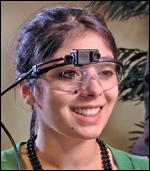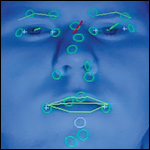Disney Media and Advertising Lab
Back in 2009, we reported on what seemed to be a secret neuromarketing lab in Austin operated by Disney. As much as we hear about neuro-cinema and neuro-enhanced movies, it seems that Disney’s goal is more prosaic: determining which ads actually work. They also use the lab to investigate new technologies that people aren’t familiar with, like 3D TV. Variety provides some history on the Disney Lab:
The concept for the Disney lab was born at a Disney ad sales forum. The Mouse and its advertisers found it was becoming very difficult to know which ads were working.
Traditionally, the nets would create content or ads, then survey viewers for reaction.
“The problem with that is, if we get a survey that says it worked really well, or that says it worked really poorly, then what do we do?” Bulgrin says. “We don’t know why it worked well or it worked poorly. The optimal thing would be to cultivate and test and retest the content or the advertising without going to the public, without going on air, until we have proof of performance that we’ve got it right.” [From Variety – Disney’s lab studies people by David S. Cohen.]
 Disney employs a variety of technologies to measure engagement, including eye tracking, biometrics, and, apparently, a form of facial coding analysis.
Disney employs a variety of technologies to measure engagement, including eye tracking, biometrics, and, apparently, a form of facial coding analysis.
The lab was set up by Duane Varan of the Interactive TV Research Institute at Murdoch U., in Perth, Australia.
Beating the DVR
 One of the biggest problems facing television advertisers is the DVR – consumers who record shows can fast-forward through the ads. Disney tested both embedded ads and traditional 30-second spots, and found that the most effective approach was a combination of the two.
One of the biggest problems facing television advertisers is the DVR – consumers who record shows can fast-forward through the ads. Disney tested both embedded ads and traditional 30-second spots, and found that the most effective approach was a combination of the two.
Peter Seymour, executive VP of strategy and research for Disney Media Networks, commented to Variety, “The live ad conditions the person, so when the commercials play, they’re more engaged and you get that more impactful effect of the combination.”
Little Screens Work, Too
One finding that may surprise some is that small screens can be as engaging as big ones:
“The smaller screen can be just as effective as the 50-inch display in your living room,” [Artie Bulgrin, senior VP of research and analytics for ESPN] says. Because smaller screens are held closer to the eyes and are more interactive, he says, “there’s an orienting effect. The viewer becomes oriented to that device.
“Whereas conventional wisdom would have said video advertising on those smallscreens can’t be as effective, in fact, they can be. And the best part is we can explain (why this is so) to our advertisers (and) to our content guys up in Bristol.”
Now that Neuromarketing is based in Austin, we’ll try to provide still more insight into Disney’s operation here.

